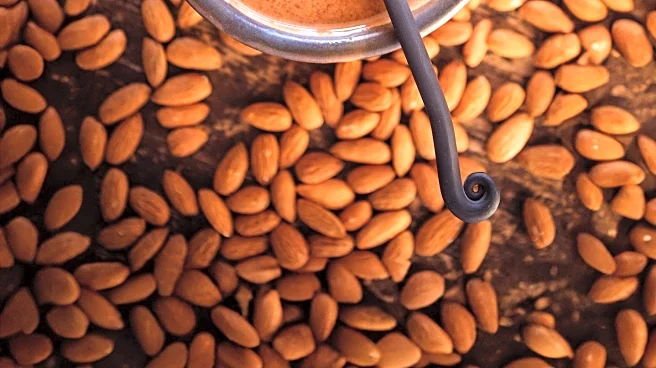What's Happening?
Researchers at Lund University have uncovered the scientific reasons behind why spaghetti maintains its structure when boiled. The study highlights gluten as a crucial component that acts as a structural
support, preserving the starch within the pasta. The research involved analyzing both regular and gluten-free spaghetti using advanced techniques like small-angle neutron scattering and X-ray methods. These findings reveal that gluten-free pasta requires precise cooking conditions to maintain its integrity, unlike regular pasta which is more tolerant to variations. Additionally, the study found that the amount of salt in the cooking water significantly affects the pasta's microstructure, influencing its texture and overall dining experience.
Why It's Important?
This research is significant as it provides insights into the molecular structure of pasta, which could lead to improvements in gluten-free alternatives. With the growing demand for gluten-free products, understanding the structural dynamics of pasta can help manufacturers develop more durable and nutritious options. The findings also emphasize the importance of cooking conditions, such as salt concentration, in achieving optimal pasta texture, which could influence culinary practices and consumer preferences. This study bridges the gap between food science and everyday cooking, potentially impacting the food industry and consumer habits.
What's Next?
The research team plans to expand their study to include a wider variety of pasta types and production methods. They aim to simulate digestion processes to understand how pasta's molecular structure changes in the human stomach. This could lead to the development of pasta products that are not only structurally sound but also nutritionally beneficial. The ongoing research may also explore the potential for creating gluten-free pasta that can withstand diverse cooking conditions, thereby enhancing consumer satisfaction and broadening market offerings.
Beyond the Headlines
The study's implications extend beyond culinary science, touching on broader themes of food sustainability and health. By improving gluten-free pasta, the research could contribute to dietary inclusivity, allowing individuals with gluten intolerance to enjoy pasta without compromising on quality. Additionally, the focus on molecular structure and cooking conditions highlights the intersection of science and gastronomy, encouraging a more scientific approach to food preparation and consumption.











